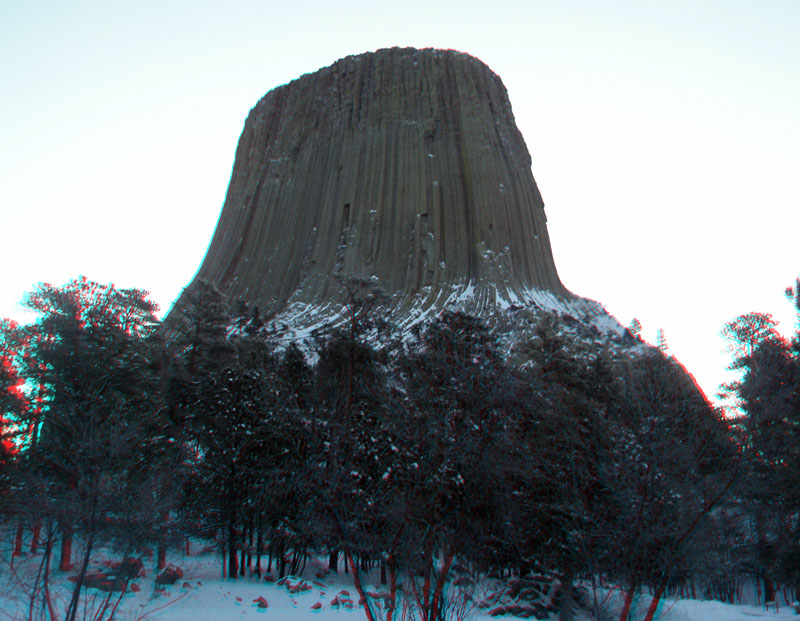
Click here to see a geologic map of the Black Hills region.
 |
| Devils Tower in Devils Tower National Monument is the erosional remnant
of the neck of what was possibly a large volcano or laccolithic intrusion. It is a steep sided igneous body that displays spectacular columnar jointing. Volcanism took place in the vicinity in Eocene time, about 50 to 40 million years ago when the region was still near sea level. The igneous rocks of Devils Tower formed about 40 million years ago (Halvorson, 1980). At that time, the Black Hills and other ranges in the Rocky Mountains region were rising and shedding sediments into surrounding lowland basins. These basins overfilled and streams spread sediments eastward onto the Great Plains east of the Rocky Mountains. In Miocene time, the entire Great Plains and Rocky Mountains region began to rise again. As the land rose, erosion stripped away softer sediments, leaving behind more resistant rocks, like the igneous rock of Devils Tower, the cores of the Black Hills, and other uplifts, pinnacles, and buttes across the region. Stream levels in the region today are about a mile higher in elevation than when the Devils Tower igneous body formed (Dewitt and others, 1989; Karner and Halvorson, 1987; NPS, 2008). Click here to see a geologic map of the Black Hills region. |